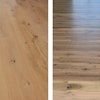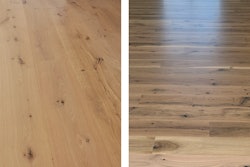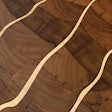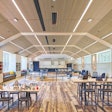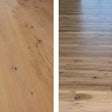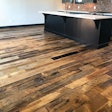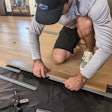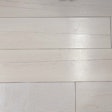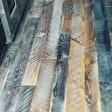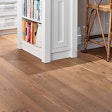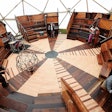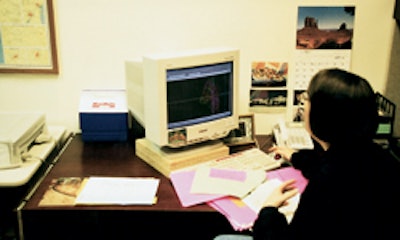
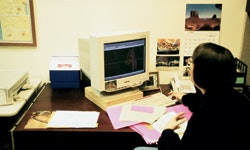 A laser-cut inlay begins with an initial computer-generated design.
A laser-cut inlay begins with an initial computer-generated design.
Examples of beautiful, intricate wood flooring borders and inlays can be found in centuries-old castles and palaces. At that time, their painstaking construction was something that only society's elite could afford, and highly skilled craftsmen could labor over the projects for years or even decades. In our modern times, however, borders and inlays have become a design element that even the average wood floor owner can consider, with both custom and stock designs available.
Today, there are three main ways that borders and inlays are constructed. The oldest method is to handcraft the piece using conventional saws such as chop saws, table saws and scroll saws — these are sometimes referred to as "geometric" lines. Second, a CNC (Computer Numeric Control) router can be used to cut the pieces for the inlay or border. The third and increasingly popular method for cutting the wood is to use a laser.
 An operator monitors a router in action.
An operator monitors a router in action.
Before any wood goes to the cutting table, however, there is a meticulous planning process, starting with the pattern or design. The complexity of the design can dictate with which method the border will be cut. A simple geometric pattern can be economically cut with conventional saws. For more complex designs, some craftsmen still use conventional saws to cut intricate designs. However, most manufacturers scan a drawing or photograph into a computer-aided design program, with the design then modified and manipulated into a cutting program for the router or laser, taking care to ensure that all lines and curves are properly connected.
A vitally important element of the planning has nothing to do with computers at all. Wood, grain and species selection can determine whether the inlay or border will look like a work of art or an odd conglomeration of random wood pieces. Mineral streaks, sapwood and knots must all be avoided while selecting the desired grain pattern.
 Carefully selected boards of various species wait for the laser table.
Carefully selected boards of various species wait for the laser table.
With the wood carefully chosen, it is cut to the thickness required, anywhere between 5/16 to 3/4 inch, and sanded. The pieces are then cut to the necessary width and length. The router systems that are used vary from machine to machine with how they cut — either the router moves, the table underneath moves, or, with some systems, both the router head and table move as the machine cuts. Bit sizes for these routers go down to 1/16 inch.
With laser systems, the laser head is mounted over a table, and either one may be movable. There are two basic controls for the laser that determine its cutting power — wattage and speed. Both must be carefully selected to create a clean, accurate cut for different species' hardness and density.
 A laser cuts out a rose pattern for a custom border.
A laser cuts out a rose pattern for a custom border.
With the pieces cut, the puzzlemaking begins. The assemblers check each piece for accuracy of fit; the misfits are discarded or cut again. When the inlay or border is tight enough for satisfaction, the "good side" is taped firmly together for gluing to a backer board, which both holds the products together and builds it up to the actual floor thickness. Most manufacturers use a cold press or vacuum press to accomplish this.
Afterwards, it is sanded, finished (if desired) and the completed product is ready for shipping to the customer. Careful packaging to avoid damage is the final step in a process devoted to precision.— K.M.W.
 Much like a puzzle, a large custom pattern is assembled.
Much like a puzzle, a large custom pattern is assembled.













